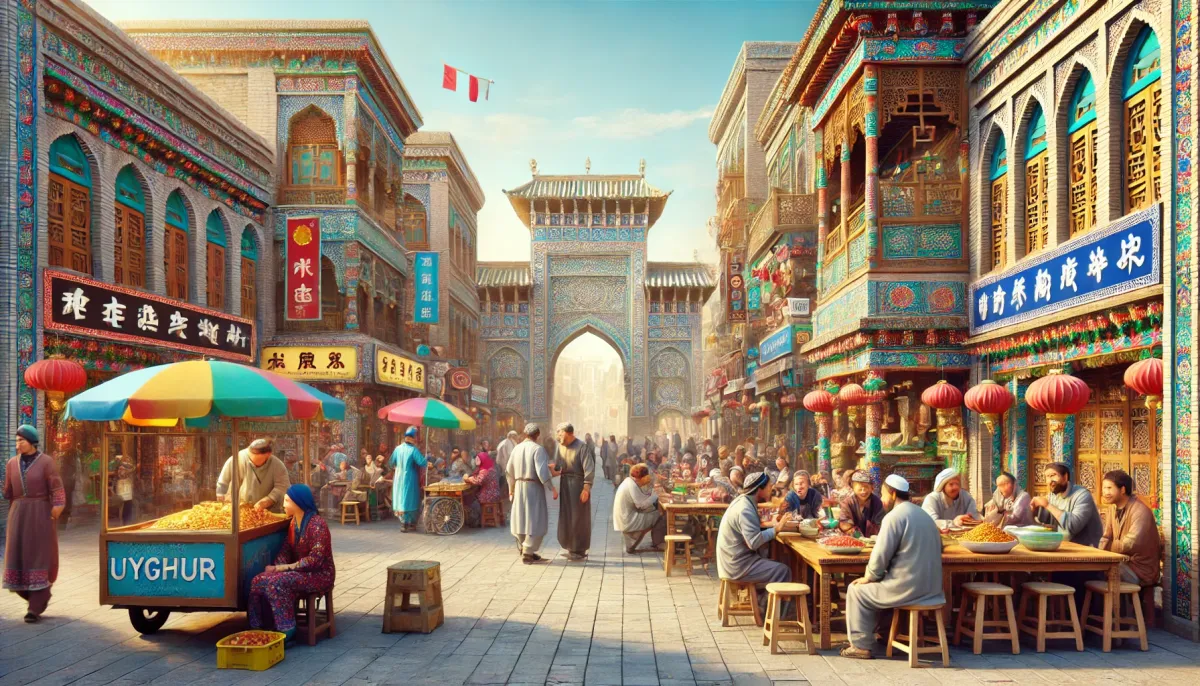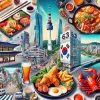Hey everyone, Mark here! I recently returned from an incredible three-day trip to Yining, Xinjiang, a city that's been touted online as the most livable in the region. Intrigued by this claim, I decided to see for myself. Let me tell you, my experience was far richer and more unexpected than I ever imagined. Get ready to join me on this culinary and cultural adventure!
A Foodie's Paradise: From Street Eats to Restaurant Delights
My journey started with a hearty breakfast—a 4 RMB (approximately $0.57 USD) "thin-skinned bun," a steamed delight I devoured at a bustling local eatery. The narrow aisles and packed tables were a testament to its popularity amongst both locals and tourists. This was just a taste of what was to come. My culinary exploration continued with a delicious mutton soup (金针菇,豌豆粉,木耳, and greens), followed by a unique lamb lung dish (米肠面肺) filled with rice porridge. I also sampled some incredible sheep trotters (羊蹄) for 6 RMB (approximately $0.85 USD), a truly unique experience. The chewy tendons were unexpectedly delightful.
Later, I stumbled upon a street vendor selling doubao (肚包), a type of stuffed bun. A conversation with the vendor, a woman from Gansu province, revealed the regional variations in this classic dish. I also tried freshly made pan-fried buns (煎包) for 2 RMB (approximately $0.28 USD) and sweet rice cakes (糖糕) for 3 RMB (approximately $0.42 USD). A young Uyghur college student working part-time at a stand selling zhu tian zongzi (竹甜粽子), sweet bamboo rice dumplings, shared her story, showcasing the resourcefulness of young people in Xinjiang. The dumplings, slightly sweet with sesame seeds, were a perfect end to my street food exploration.
Exploring the Vibrant Culture of Yining's Old Town (伊犁老城 喀贊其民俗旅遊區)
The next day, I ventured into Yining's captivating old town, a must-see destination for any visitor. The vibrant colors, unique architecture, and friendly locals created a truly immersive experience. I opted for a 50 RMB (approximately $7 USD) sightseeing tour in a motorized rickshaw, which provided a fantastic overview of the expansive old town. The architectural style was unique, with many buildings painted in a sky blue, a distinctive feature of the Uyghur culture. I also visited the Xinjiang Mosque (伊寧陝西清真寺), which added another dimension to my understanding of the region’s religious tapestry.
I stopped by a charming courtyard restaurant, converted from a traditional Uyghur home, showcasing a harmonious blend of modern hospitality and ancient traditions. The food here was top-notch. I even got to see a small lamb happily munching on an onion. It felt like every building was designed to be a movie set, charmingly attracting customers.
A Day at the Races: Experiencing the First Yining Dragon Boat Festival
My trip coincided with the first ever Yining Dragon Boat Festival (端午节), which made my visit even more special. The festivities along the Ili River (伊犁河), stretching over 1000 kilometers, were captivating. I witnessed thrilling dragon boat races, vibrant cultural performances, and the traditional customs of hanging mugwort (艾草) for good luck. This was a cultural immersion I won't soon forget. The atmosphere was electric, and the energy infectious. I even got to try mǐjiǔ (米酒), a traditional rice wine with purported health benefits. This event was a highlight of my trip, showcasing the rich cultural heritage of Yining and Xinjiang.
Yining's Culinary Gems: Hand-Pulled Rice and More!
Yining's culinary scene is simply outstanding. I had the pleasure of trying several different types of polu, a hand-pulled rice dish. From street vendors to high-end restaurants, the variations and quality were impressive. The most memorable was a 25 RMB (approximately $3.50 USD) polu with incredibly tender carrots and flavorful lamb. The lamb was perfectly cooked, soft and juicy, with a subtle sweetness and a perfect balance of salt and flavor. It was truly the best polu I had during my entire trip. I also sampled a more expensive version, at 45 RMB (approximately $6.30 USD), which included a lamb shank and several small lamb chops. While this dish was delicious, it wasn't as outstanding as the more modest 25 RMB dish.
My Verdict: Is Yining the Most Livable City in Xinjiang?
After three days exploring Yining's culinary scene, historic sites, and vibrant culture, I can wholeheartedly say it's a city brimming with charm and character. While I can't definitively say whether it's the most livable city in Xinjiang, it undoubtedly deserves its reputation for livability. The people were incredibly friendly, the food was delicious, and the culture rich and captivating. It's a destination I highly recommend to anyone visiting China, especially those looking for an authentic cultural experience beyond the typical tourist hotspots.
Pricing Table (in RMB, approximate USD equivalents in parentheses):
| Item | Price (RMB) | Price (USD) |
|---|---|---|
| Thin-skinned bun | 4 | ($0.57) |
| Mutton Soup | Varies | Varies |
| Sheep Trotters | 6 | ($0.85) |
| Pan-fried buns | 2 | ($0.28) |
| Sweet rice cakes | 3 | ($0.42) |
| Bamboo rice dumplings | Varies | Varies |
| Rickshaw tour | 50 | ($7.00) |
| Hand-Pulled Rice (cheap) | 25 | ($3.50) |
| Hand-Pulled Rice (expensive) | 45 | ($6.30) |
| Yogurt | 6 | ($0.85) |







